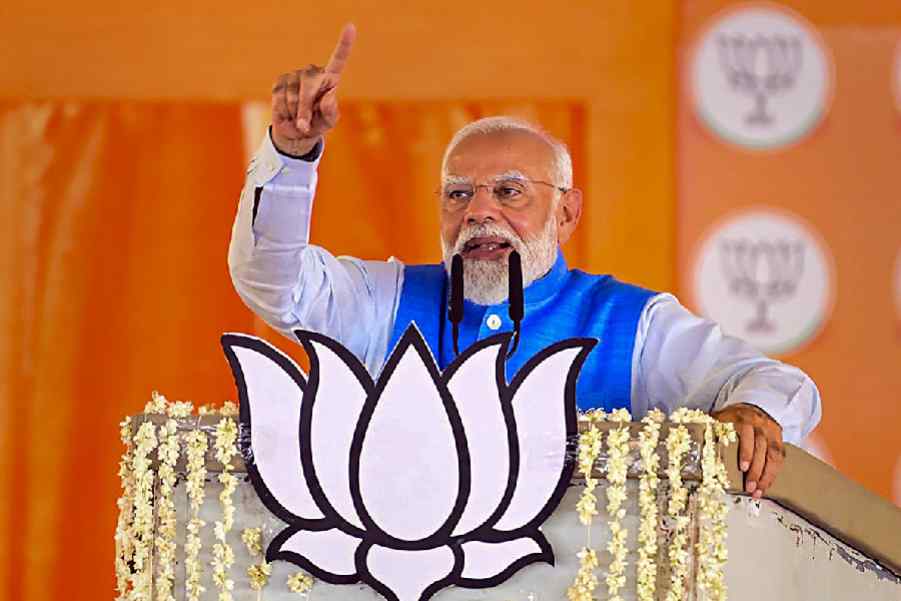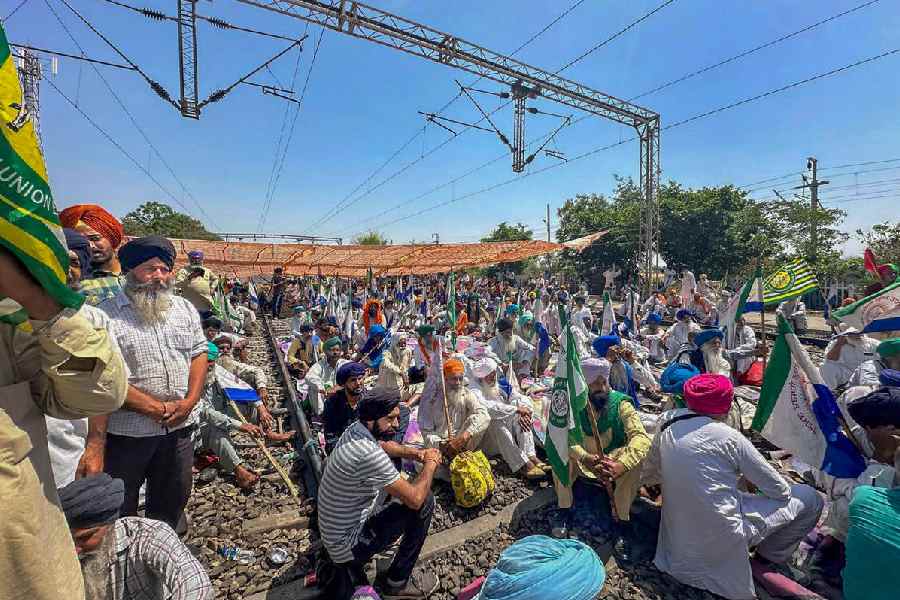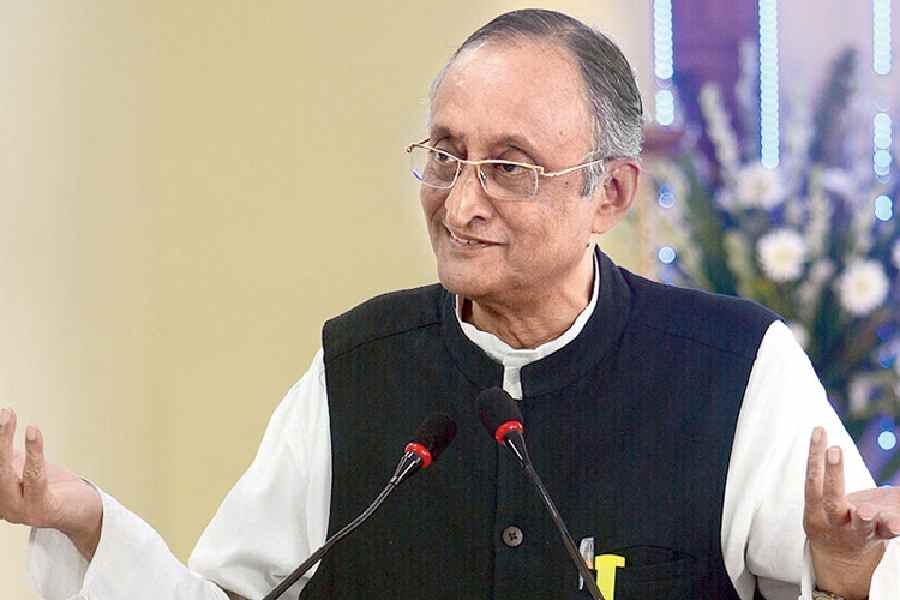 |
| Hemchandra Bandopadhyay’s house |
 |
| Michael Madhusudan Dutt’s house |
 |
| The mess-bari in which Shibram Chakraborty lived |
 |
| Narayan Gangopadhyay’s house |
 |
| Meera Mukherjee’s house |
Her house stands out in the congested Kanunga Park in Garia. The first floor has been let out to a Bata store. Ask anyone in the locality and they promptly point to the second floor of the off-white building where Ashapurna Devi lived with her family since 1970. It was in the mezzanine floor of this house that the author wrote many of her works of fiction, including Neel Parda and Bokul Kotha. Today that room lies in a sorry state just as many of her books have lost their sheen for GenNext.
As her daughter-in-law Nupur Gupta — the only family member living there — ushers you in, a world of memories unfolds. Photographs and mementoes all over the drawing room remind you of the heights the author had scaled despite not getting a formal schooling. Her Pratham Pratisruti and Subarnalata are among the boldest portraits in Indian literature of women pitched against a narrow, rigid, patriarchal society, but how many remember Satyabati of Pratham Pratisruti or her daughter Subarnalata now?
Not many know that 2008 is Ashapurna’s centennial year either. She was born in 1909. “We expected the state government to give Ashapurna Devi some recognition in her centenary year. They have done nothing. Surprisingly, not many writers and educationists have come forward to pay her a tribute either. Public memory is indeed short-lived,” says Gupta.
As the city stood witness to a pitched battle between the state government and environmentalists over Book Fair, a small group of writers and educationists mourned the loss of readers of Bengali literature. While English bedtime tales are slowly replacing Thakurmar Jhuli, Khirer Putul and Tuntunir Golpo, Pottermania is reigning over Podi Pishir Bormi Baksho or Raj Kahini and management books and the Chicken Soup series are disappearing fast from the shelves, the memory of older, redoubtable Bengali writers is fading away. The derelict houses of most writers and artists of yesteryear show how indifferent the state government is to literary and artistic heritage.
Epic carelessness
Take Michael Madhusudan Dutt’s house. Civic authorities claim it is a heritage building. It stands on the main road at 20B Karl Marx Sarani in Kidderpore with a private diagnostic centre running “illegally” on its ground floor. “The house has been forcibly taken over by a local goon-turned-promoter who has set up the clinic and let out portions of the top floors,” says a local resident who does not want to be quoted. The clinic’s address has also been posted on the Net and its staff refuse to recognise the property as Michael’s house. They will try their best to mislead you or even stop you from taking snaps.
“We will take action if we receive any official complaint,” says Jainal Abedin, the additional OC of Watgunge police station. A police source agreed that use of muscle power by promoters is a common thing in the area.
The residences of other writers, which are located in the renowned kabitirtha area in Kidderpore, are in no better shape. Poets Rangalal Bandopadhyay and Hemchandra Bandopadhyay’s houses, both heritage buildings, scream for repair. If not for their literary past, civic authorities should have taken note of the houses because of the risk they pose.
“Seventy-five per cent of the heritage houses in Calcutta are very badly maintained. Previously we did not have any funds for their upkeep. It’s only been a year since cash has started flowing in. Of course, houses of writers like Michael need to be maintained. We will make a list and look into the matter,” says mayor Bikash Ranjan Bhattacharyya.
Sculptor Meera Mukherjee’s residence — where she lived till her death on January 27, 1998 — can top the list of dangerous buildings. It was here at 12A Paddapukur Road that she created many of her masterpieces. She used a part of the house as a studio and, according to neighbours, had beautified the doors of this house with her drawings. The house is on the verge of collapse and though some residents continue to stay there, no trace of the artist remains.
A dirty narrow lane off Thanthania Kali temple and near Muktaram Babu Street leads you to a dilapidated men’s hostel, popularly called a mess. There’s nothing unusual in that, only this building in Kedar Banerjee Lane had once been the residence of renowned Bengali humorist Shibram Chakraborty. Finding the house, a character by itself, is a feat. Shibram had immortalised the walls of his room by using it as a calendar.
The story goes that Shibram, the creator of the absurd but good-natured brothers Harshabardhan and Gobardhan, had borrowed some money from a kabuliwala but the latter never found his way to the building. He wouldn’t still. There’s not even a plaque outside. Only some veterans of the locality remember the writer as a loner, but a genial neighbour. They even remember the last essay he wrote from the second-floor room of the rickety house. “He was a great favourite among the kids here,” says one.
Creative abodes
Arijit Gangopadhyay remembers his father Narayan Gangopadhyay, the creator of the lovable Tenida with the singara-nose, as being very fond of their house in Baithakhana Street. “It was the first house that he had bought and loved every bit of it. It was here that he held frequent meetings with Bhanubabu of Mitra and Ghosh Publishers.
“We stayed in the house from 1957 to 1968 and many of his Tenida plots as well as novels like Khushir Hawa, Baro Bhute and Teen Prohor were born here. Sadly, we had to leave the house for Panchanantala because my father could not bear the sound pollution in this area,” he says. So what happened to the 90/1 Baithakhana Road house? “This address does not exist,” say local shopkeepers. Subsequent owners have divided the two-storeyed house into two portions — 90/1A and 90/1B.
“During the Congress regime, my father was ignored for his Left inclinations, but the Communists turned out to be equally indifferent to him,” Arijit adds.
 |
| Ashapurna Devi at work in her residence |
According to writer Shankar: “All this excitement over the Book Fair is just a fad. The truth is, there are few takers of Bengali literature. Forget the derelict houses of writers, we do not even have good libraries for their books. Only novels that have been made into films are remembered,” he says.
Guess what’s happened to the house of renowned linguist Suniti Chattopadhyaya? On its ground at 16 Hindustan Park stands a Fabindia outlet. Poet Jatindramohan Bagchi’s house in the neighbourhood has been demolished for building a highrise. Amitananda Das, poet Jibanananda Das’s nephew, claims that their house at 183 Sarat Bose Road — where the poet wrote Alo Prithibi — has now been purchased by a film actor while a kindergarten school runs at 186A Gopal Lal Tagore Road, Baranagar where Manik Bandopadhyay lived on a rent of Rs 65. At least that leads to these houses being maintained well.
Currency of compilation
One way to keep authors in currency is through the publication of rachanabolis, or the complete works of an author, publishers have discovered. This is profitable for both publishers and the writers’ families.
A rachanaboli is not only for the serious reader. Often it is a status symbol, feel publishers. “Compiling all the works of a writer is a tough job. We look for even his unpublished or half-finished writings. Rachanabolis prove an asset for all research scholars and book-lovers,” says Subhankar Dey of Dey Publishers.
Enter the small office of Mitra and Ghosh publishers and the first thing that catches your eye is Bibhutibhushan Bandopadhyay’s rachanaboli. “Books are often misplaced or get damaged. Readers are usually very careful with their collection of complete works, given they dish out a heavy price for them. Not just the Book Fair, a rachanaboli is much in demand any time of the year,” said Sabitendra Nath Roy (popularly called Bhanubabu) of Mitra and Ghosh Publishers. According to him careful planning goes behind the printing of a rachanaboli. “It takes years to print an author’s complete works.” Most publishers only zero in on writers who sell.
Mitra and Ghosh have till now published rachanabolis of nearly 18 authors. These include works of Tarashankar Bandopadhyay, Bibhutibhushan Bandopadhyay and Syed Mustafa Ali. The most recent one includes compilation of Satinath Bhaduri’s works.
Subhankar Dey says that besides being in the process of compiling works of Prafulla Roy, Mahasweta Devi and Amiabhusan Majumdar, they have also compiled Utpal Dutta’s prose. “Sometimes we go ahead with our compilation knowing only an elite section of readers will buy it,” he adds.
At other times they add to the already existing treasure trove only because the author sells. “Several publishers have already compiled works of Bankim Chandra Chattopadhyay. We have done it too. But plans are on to come up with a better compilation as the demand never goes down in this case,” Dey said.
A rachanaboli is often released to mark a special occasion. Bangla Academy has come out with Manik Bandopadhyay’s complete works in 11 parts on the completion of his centennial year (he was born in 1908). The 12th part will be out soon. “It is selling like hot cake. Each part has sold almost 8,000-9,000 copies. The royalties add up to some lakhs,” says Subhomoy Mondol, the publishing editor of Bangla Academy. At times demand is more than supply. Naturally the family of the author, who had seen hard days, is happy. “My father got a fresh lease of life through his rachanaboli. Many of his unpublished works have also seen the light of day,” said Manik Bandopadhyay’s son Sukanta.
Bangla Academy has also cmpiled the works of Kazi Nazrul Islam. Next on the cards is a compilation of essays by Buddhadeb Basu










